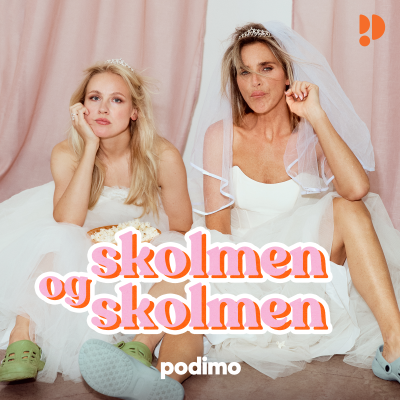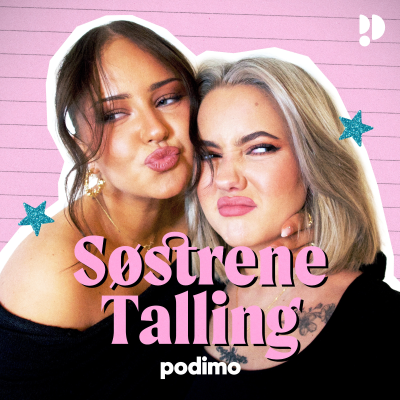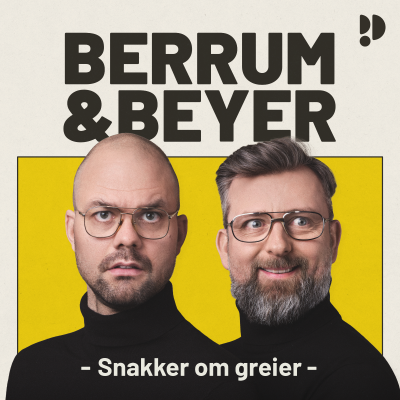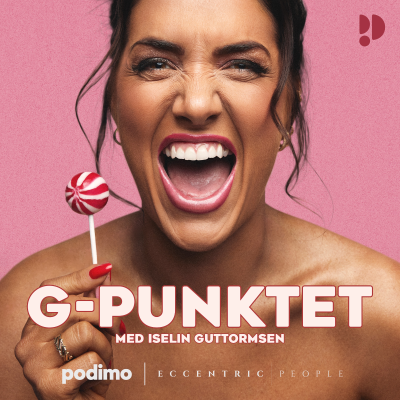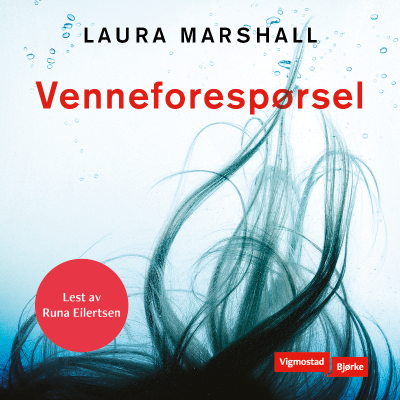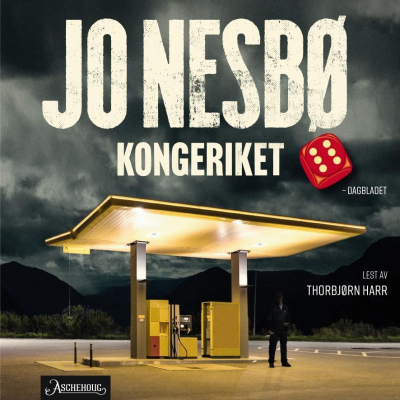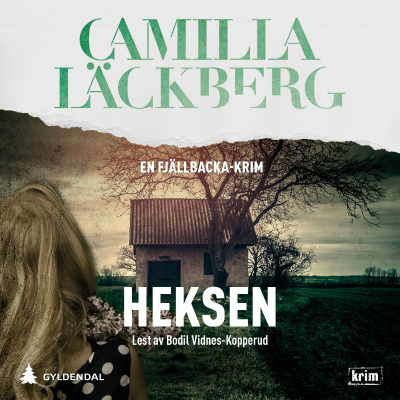The Safety of Work
Podkast av David Provan
Do you know the science behind what works and doesn’t work when it comes to keeping people safe in your organisation? Each week join Dr Drew Rae and Dr David Provan from the Safety Science Innovation Lab at Griffith University as they break down the latest safety research and provide you with practical management tips.
Prøv gratis i 7 dager
99,00 kr / Måned etter prøveperioden.Avslutt når som helst.
Alle episoder
130 EpisoderYou’ll hear six key principles for effective behavioral substitution, drawing parallels between healthcare and safety contexts. They discuss how these principles can guide both the removal of ineffective practices and the implementation of new ones, emphasizing the importance of considering practical needs, existing skills, and organizational resources when making such changes. The episode provides valuable insights for safety professionals looking to improve their organization's safety practices through evidence-based substitution strategies. Discussion Points: * ((00:00) Introduction and episode overview on swapping as a decluttering strategy * (00:59) Background discussion on behavioral science and de-implementation * (02:27) Understanding decluttering and de-implementation in healthcare context * (05:08) Example of de-implementation in clinical practice and patient care * (06:55) Introduction to the paper and authors' background * (16:32) First principle: Evidence and rationale for substitute behaviors * (19:49) Second principle: Meeting both clinical and practical objectives * (24:51) Third principle: Clear explanability of new practices * (26:29) Fourth principle: Time considerations for substitute behaviors * (28:30) Fifth principle: Alignment with existing skills * (31:40) Sixth principle: Cost implications of substitute behaviors * (34:39) Three practical takeaways and implementation strategies, the answer to this episode’s question * Like and follow, send us your comments and suggestions for future show topics! Quotes: "You can't swap out something that people believe works for something that they don't believe works." - Drew Rae "A lot of the safety, if not all the safety work we do in organisations is about anxiety reduction, not necessarily about improving safety.” - David Provan "Rather than thinking about decluttering as just what we can reduce or take away, it may be more useful to think about it as a process of gradually swapping out each thing that's not working well." - Drew Rae "If you can't explain the substitute behavior with the same ease which you can explain the behavior that you want to be implemented, then people have to work a bit harder and they might go. Why are we making this all so complex?" - David Provan “That's the point they're making here, is like maybe the patient doesn't need care, but that doesn't mean that we shouldn't acknowledge their need for care and their need to be taken seriously.” - Drew Rae Resources: The Big Six: key principles for effective use of Behavior substitution in interventions to de-implement low-value care [https://journals.lww.com/ijebh/fulltext/2023/06000/the_big_six__key_principles_for_effective_use_of.2.aspx] The Safety of Work Podcast [https://safetyofwork.com/] The Safety of Work on LinkedIn [https://au.linkedin.com/company/the-safety-of-work] Feedback@safetyofwork [Feedback@safetyofwork.com]
The discussion challenges traditional views of supervision by emphasizing the importance of psychological safety and predictable relationships between supervisors and workers. Through analysis of interviews with both supervisors and supervisees, the research highlights how effective supervision requires balancing organizational needs with worker support while maintaining clear boundaries and expectations. The findings suggest that organizations should focus on developing explicit supervision models that promote both technical expertise and relationship skills. Discussion Points: * (00:00) Introduction - what makes an effective supervisor? * (02:29) Narrowing research focus, specific industry context * (06:07) Introduction to the research paper and authors' backgrounds * (09:46) The literature review's structure and key findings * (22:12) Research methodology, interview approach, eight core themes, Theme 1: Safety and establishing predictable relationships * (26:00) Theme 2-3: Emotional impact of work and learning/growth * (35:45) Theme 4-5: Leadership behaviors and integrity/justice * (42:12) Theme 6-7: Balancing supervision functions and organizational processes * (51:14) Key takeaways and practical implications for organizations * (55:00) The answer to our question: What are the attributes of an effective supervisor? The answer is, everything you expect, but with a new emphasis on the safety and predictability of that relationship. * Like and follow, send us your comments and suggestions for future show topics! Quotes: "There is a ton of safety research which says that frontline supervision - that direct relationship between a team leader and the people they're supervising - is really, really important for safety." - Drew Rae "Supervision is a really important aspect of safety and safety management." - David Provan "Power is inherent in these relationships... Supervisors don't have a lot of formal power, so the supervisor themselves often won't feel that they have power at all." - Drew Rae "This is not an exploratory study. This is a properly conducted piece of high quality, qualitative research, and I think it does draw novel insights." - Drew Rae Resources: Safety as a Fifth Dimension in Supervision: Stories from the Frontline [https://doi.org/10.1080/0312407X.2015.1024265] The Safety of Work Podcast [https://safetyofwork.com/] The Safety of Work on LinkedIn [https://au.linkedin.com/company/the-safety-of-work] Feedback@safetyofwork [Feedback@safetyofwork.com]
Drawing on insights from business leaders and contemporary educational theory, we propose that effective safety professionals require both technical expertise and sophisticated narrative capabilities. The findings suggest significant implications for safety education and professional development, challenging institutions to reconsider how they prepare safety practitioners for increasingly complex organizational environments. Rather than perpetuating false dichotomies between hard and soft skills, we argue for an educational approach that develops both technical and narrative capabilities in an integrated manner, particularly crucial for safety change management where success depends on both procedural competence and compelling storytelling. Discussion Points: * (00:00) Introduction - Should safety education focus on hard or soft skills? * (01:04) Background - Safety Science Innovation Lab and higher education context * (02:27) Hard vs Soft Skills - Discussing the limitations of this categorization * (05:08) Storycraft Report - Overview and methodology of the Oxford study * (15:00) Understanding Narrative - Definitions and importance in business * (18:15) Three Core Business Purposes of Narrative: Communicating business values, persuasion and influence, driving and managing change * (26:06) Five Essential Narrative Skills Framework: Narrative communication, empathy and perspective taking, critical analysis, creativity and imagination, digital skills * (36:00) Who Needs Narrative Skills - Integration of STEM and humanities in education * (40:35) Three Key Takeaways - Value of tertiary education, importance of narrative skills in safety, managing change * The answer to our question: Should safety education focus on hard skills or soft skills? If you didn’t like the question, I think you will like the answer, which is: We should stop dividing the world into hard skills and soft skills, or into STEM and into humanities. Just teach everyone both. * Like and follow, send us your comments and suggestions! Quotes: “There are different skill categories, but they’re mostly about specific skills versus transferable skills.” - Drew “One of the things that Griffith [University] was specifically set up for is based on the idea that education is important for social mobility.” - Drew “A narrative in business is the communication of a business activity or idea…it’s the ability to tell your story or your direction.”- David “if a business can convey some narrative or strategic vision about who they are and what they’re doing, they’re going to get much more useful work out of their employees.” - Drew Resources: Storycraft: the importance of narrative and narrative skills in business [https://ora.ox.ac.uk/objects/uuid:81bb9c20-0896-47cb-aa14-26a41817e591] The Safety of Work Podcast [https://safetyofwork.com/] The Safety of Work on LinkedIn [https://au.linkedin.com/company/the-safety-of-work] Feedback@safetyofwork [Feedback@safetyofwork.com]
In this discussion, we dissect various models of safety culture, scrutinizing how organizations perceive, measure, and manage these concepts. From artifacts like management systems to individual attitudes and behaviors, we delve into the inconsistencies and challenges of these models. We also revisit historical perspectives, such as Dov Zohar's work, to understand their influence on contemporary safety paradigms. Our conversation critically examines the missteps of industries like nuclear and aviation, which have mandated the management of ambiguous concepts without solid scientific grounding. We advocate for a shift from vague cultural mandates to actionable strategies, offering insights into enhancing clarity and effectiveness in both regulatory practices and organizational improvements. This episode aims to inspire a reevaluation of safety culture, pushing for a more scientifically grounded and practical approach to safety science. Some highlights from the paper: * Safety culture as a concept is examined from scientific and pragmatic perspectives. * The case is made for the removal of safety culture from the safety science lexicon. * Much safety culture research is vulnerable to a fallacy of logic – we should not take a selection of parts to equal the whole. * Robust research of the various individual ‘elements’ of safety culture, in methodologically appropriate ways, will enhance the field of safety science and better support improvements in practice. Discussion Points: * (00:00) Introduction: Rethinking Safety Culture - An overview of the conversation around safety culture and its evolving significance * (07:04) Challenges in Defining Safety Culture - Exploring the difficulties in pinning down a clear and universal definition of safety culture * (10:00) Safety Culture Research Models & Philosophies - different research models in safety culture, and the philosophy behind them, issues with lumping all safety-related terms together * (17:00) Three Definitions of Safety Culture - Is it social, individual, or organizational? Each perspective offers a unique research approach * (21:00) Perceptions of Safety Culture - The way we understand safety culture might differ greatly from someone else’s interpretation * (22:00) Buckets of Safety Culture: Young vs. Mature Organizations * (24:23) The Importance of Specificity Over Vagueness, difference between safety climate and safety culture * (29:11) The One-Question Survey: Industry Perspectives and Practical Insights - Examining the one-question survey methodology, participant responses, and the insights gathered from industry perspectives. * (36:00) Safety Performance vs. Safety Culture * Discussing the distinction between safety performance and the broader concept of safety culture. * (39:52) Clarifying Definitions: Drew and David’s Papers * (40:25) Meta Takeaway: Defining 'Culture' Specifically - ask yourself what you actually mean and define it specifically * Conclusions and Takeaways * The final question: Is it time to stop talking about safety culture? The answer: "Yep." * Like and follow, send us your comments and suggestions! Quotes: “The paper itself is very very stylish and self -aware and that's important not just for readability but for the state that this conversation is in...it's got all of these references that show that they're very aware of the landmines that people keep stepping on, in just even trying to write and untangle safety culture.” - Drew “When someone uses the term ‘safety culture’, it's very common for them to be thinking about everything from commitment of people, compliance with procedures, level of resources, the balancing of goals, safety communication, leadership. All of these individual things just get lumped together into this term ‘safety culture.” - David “The moment you start trying to turn it into practical actions, that's when everything starts to crumble - when there aren't good, agreed definitions.”- Drew “You can't just wander into a company and say, ‘I want to study company culture.’ That's like a marine biologist going into the ocean and saying, ‘I want to look at things that live in the ocean’...Be precise, be narrow, be specific about what it is that you actually want to look at.” - Drew Resources: Seeking a scientific and pragmatic approach to safety culture in the North American construction industry [https://www.sciencedirect.com/science/article/pii/S0925753524002480] Ep.44 What do we mean when we talk about safety culture? [https://safetyofwork.com/episodes/ep44-what-do-we-mean-when-we-talk-about-safety-culture] Dov Zohar’s Published Research [https://scholar.google.co.il/citations?user=5rodk5oAAAAJ&hl=en] The Safety of Work Podcast [https://safetyofwork.com/] The Safety of Work on LinkedIn [https://au.linkedin.com/company/the-safety-of-work] Feedback@safetyofwork [Feedback@safetyofwork.com]
From discussing mobile phone use while driving to the challenges of giving advice to older adults at risk of falls, this episode covers ChatGPT’s responses to a wide range of safety topics - identifying biases, inconsistencies, and areas where ChatGPT aligns or falls short of expert advice. The broader implications of relying on ChatGPT for safety advice are examined carefully, especially in workplace settings. While ChatGPT often mirrors general lay understanding, it can overlook critical organizational responsibilities, potentially leading to oversimplified or erroneous advice. This episode underscores the importance of using AI-generated content cautiously, particularly in crafting workplace policies or addressing complex safety topics. By engaging with multiple evidence-based sources and consulting experts, organizations can better navigate the limitations of AI tools. Discussion Points: * Drew and David discuss their own recent experience with generative AI * The multiple 15 authors are all experts, discussing the methods used * Examining the nine different question scenarios * ‘Mobile phone use while driving’ results * Crowd/crush safety advice * Advice for preventing falls in older adults * Analyzing ChatGPT response formats * Exercising outdoors near traffic with asthma * Questioning ChatGPT about how to engage a distressed person who may commit suicide * Safety working ‘under high pressure’ and job demands, burnout prevention * Lack of nuance in ChatGPT * The safety of sharing personal data on fitness apps, how can it be shared safely? * Is it safe to operate heavy machinery when fatigued? Testing several ways to ask this question - sleepy, tired, fatigued * Conclusions and takeaways * The answer to our episode’s question: “AI is not currently a suitable source for writing safety guidelines or advice” * Like and follow, send us your comments and suggestions! Quotes: “This is one of the first papers that I've seen that actually gives us sort of fair test of ChatGPT for a realistic safety application.” - Drew “I quite like the idea that they chose questions which may be something that a lay person or even a generalist safety practitioner might ask ChatGPT, and then they had an expert in that area to analyze the quality of the answer that was given.” - David “I really liked the way that this paper published the transcripts of all of those interactions with ChatGPT. So exactly what question the expert asked it, and exactly the transcript of what ChatGPT provided.”- David “In case anyone is wondering about the evidence based advice, if you think there is a nearby terrorist attack, chat GPT's answer is consistent with the latest empirical evidence, which is run. There they go on to say that the rest of the items are essentially the standard advice that police and emergency services give.” - Drew “[ChatGPT] seems to prioritize based on how frequently something appears rather than some sort of logical ordering or consideration of what would make sense.” - Drew “As a supplement to an expert, it's a good way of maybe finding things that you might not have considered. But as a sole source of advice or a sole source of hazard identification or a sole position on safety, it's not where it needs to be…” - David Resources: The Article - The Risks Of Using ChatGPT to Obtain Common Safety-Related Information and Advice [https://www.sciencedirect.com/science/article/pii/S0925753523001868] DisasterCast Episode 54: Stadium Disasters [https://podbay.fm/p/disastercast-safety-podcast/e/1501319139] The Safety of Work Podcast [https://safetyofwork.com/] The Safety of Work on LinkedIn [https://au.linkedin.com/company/the-safety-of-work] Feedback@safetyofwork [Feedback@safetyofwork.com]
Prøv gratis i 7 dager
99,00 kr / Måned etter prøveperioden.Avslutt når som helst.
Eksklusive podkaster
Uten reklame
Gratis podkaster
Lydbøker
20 timer i måneden


